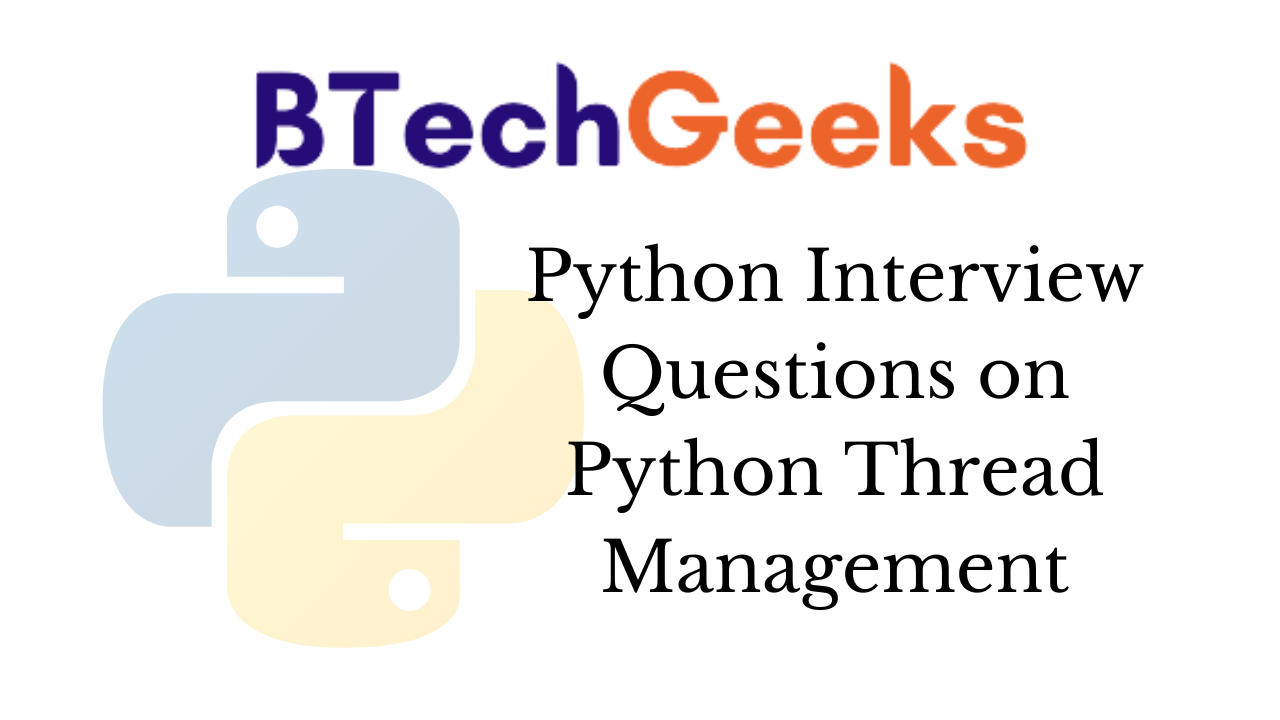Thread interview questions: We have compiled most frequently asked Python Interview Questions which will help you with different expertise levels.
You can also find out what is multithreading in python, Multithreading in c interview questions, Python interview questions for managers, Python loops interview questions, Multithreading interview questions c, Python multithreading subjective question, Python architect interview questions, Python concurrency interview questions, Multithreading in c# interview questions, multithreading interview questions c++, python interview questions on multithreading, python thread interview questions, Python threading questions, python multithreading interview questions.
Python Interview Questions on Python Thread Management
Question 1.
What are Python threads?
Answer:
Multiple streams of execution. Often used to handle multiple simultaneous requests or processing tasks. 1
122: What is a race condition?
Answer:
A race condition occurs when two or more threads are competing for the same resource, and cannot continue without \ it. This is also called a deadlock.
Question 3.
How is a new thread started?
Answer: :
By invoking the .start _new_thread( ) method of the thread module.
Question 4:
What happens to other threads if a thread in a program encounters an exception?
Answer:
A stack trace is dumped for the thread with the exception, but other threads will continue to run.
Question 5:
What is the difference between the threading and the thread modules?
Answer:
The threading module was introduced in Python 2.4 and is a higher-level manager of thread processes. Threading is a little more complex to initialize but provides better control.
Question 6:
How are threads synchronized, to prevent race and deadlock conditions?
Answer:
Using the.Lock( ) method of the threading module to create a lock object, then using .acquire( ) and .release( ) on that lock.
Question 7:
What is a timer interrupted thread, and when would it be used?
Answer:
Timer threads are created using the.Timer( ) method of the threading module. They are used for periodic cleanups, status reporting, etc.
Question 8:
Illustrate creating a timer thread that executes every 10 minutes.
Answer:
import threading
myTimer = threading.Timer(600, myFunction)
myTimer.start( )
Question 9:
How is a timer interrupted thread stopped?
Answer:
By using the .cancel( ) method of the timer thread object.
Question 10:
What is the Queue module and when is it used?
Answer:
The Queue module is a device to handle a multithreaded prioritized queue of processing tasks. It is useful when there are a number of incoming requests, with different priorities that need to be allocated processing resources.
Question 11:
How are objects added to a queue?
Answer:
Using the .put( ) method of the queue object.
Question 12:
How are objects retrieved from a queue?
Answer:
Using the .get( ) method of the queue object.
Question 13:
What are some useful methods and properties of the queue?
Answer:
.empty( ), .full( ) and .qsize( ) are useful for determining the state of the queue. .get() and .put() are used to add and remove items from the queue.
Question 14:
When using the .acquire!) method of the threading. Lock object, what does the addition of the blocking parameter do?
Answer:
The blocking parameter prevents return to the calling process until the lock can be acquired. If acquire is called without a parameter, or with 0 or false, it will immediately return with a 0 value if the lock cannot be acquired. If blocking is true, the thread will stop execution until the lock is acquired.
Question 15:
What is the difference between the .start( ) and, run() methods of the new thread object?
Answer:
.start starts the activity of a thread, .run is a method representing the thread’s activity that may be overridden in a subclass.
Question 16:
When is .isAlive( ) true?
Answer:
From when the start method is called until the run method terminates on a particular thread.
Question 17:
How is the .join() method useful for thread synchronization?
Answer:
.join() is used to block the current thread’s execution until the thread the .join is being called on terminates, or a timeout expires, at which time the calling thread’s execution resumes.
Question 18:
How is the current thread retrieved?
Answer:
By calling the .currentThread( ) method of the thread module.
Question 19:
How is the number of threads that are currently running retrieved?
Answer:
Using the threading.activeCount( ) method.
Question 20:
What is a semaphore object?
Answer:
It is a method of synchronizing activity between multiple threads.

